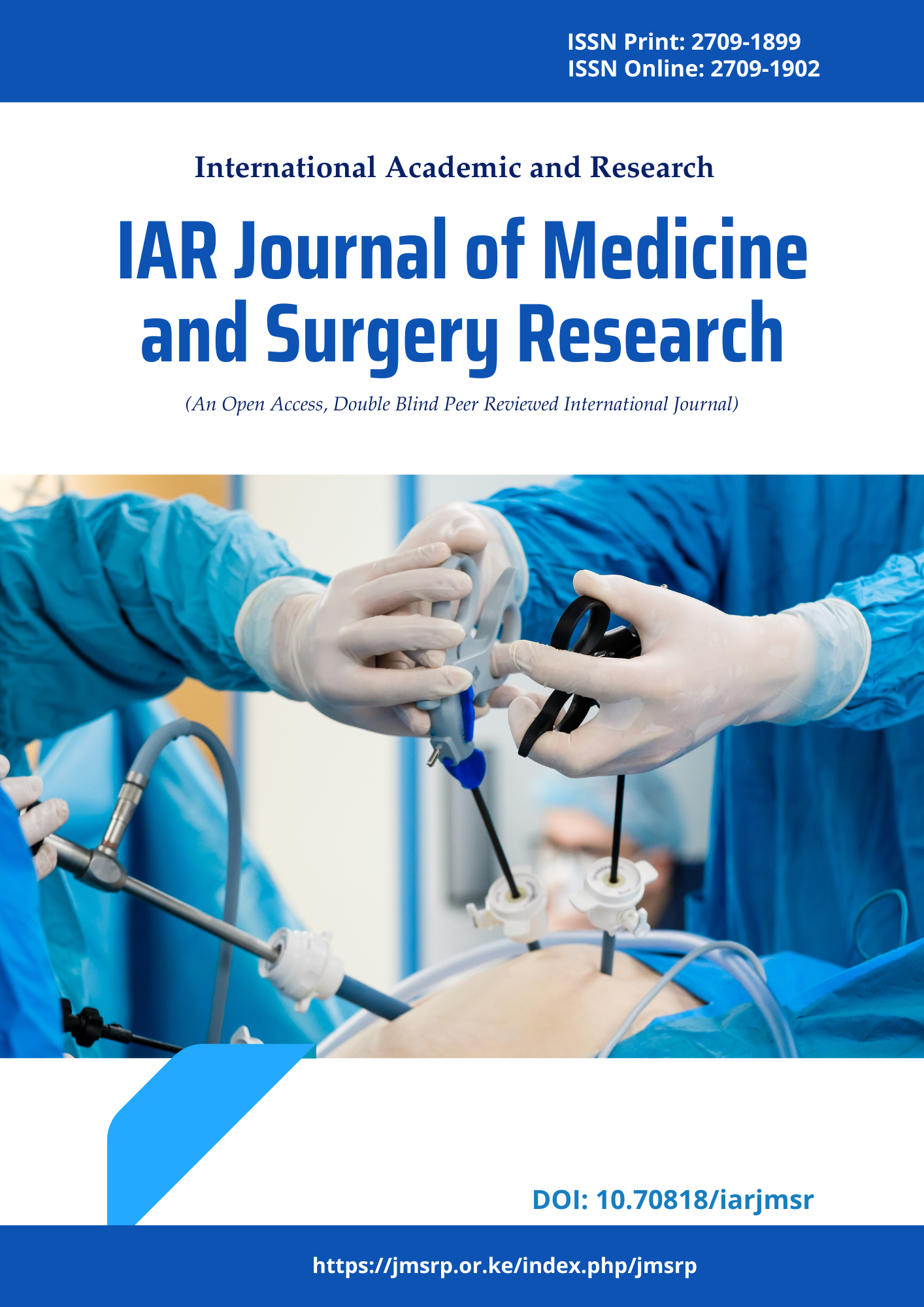A Syudy on Comparative Evaluation of Four Different Methods to QuantifyProteinuria in Pre-Eclampsia in a Tertiary Care Hospital
DOI:
https://doi.org/10.47310/iarjmsr.2023.V04i04.03Keywords:
Preeclampsia, urine sulphosalicylic acid, urine protein-creatinine ratio.Abstract
Background: Preeclampsia is a progressive, multisystem disorder due to spasm of small blood vessels of all organ systems characterized by new-onset hypertension and end- organ dysfunction in the last half of pregnancy. Objectives: Estimation of proteinuria by sulphosalicylic acid test in women with preeclampsia. Material & Methods: Prospective hospital based clinical study. Study conducted in the Department of Obstetrics and Gynaecology, Murshidabad Medical college, Berhampore, Murshidabad, West Bengal. Sep. 2021 - Aug. 2022. Pregnant women after 20weeks of gestation diagnosed as preeclampsia and admitted in antenatal ward in obstetrics and gynaecology department, Murshidabad Medical college, Berhampore, Murshidabad, West Bengal. Study consisted a total of 100 subjects. Simple Random sampling method. The pregnant women diagnosed as preeclampsia meeting the inclusion and exclusion criteria included in the study. The study comprised of pregnant women who are more than 20 weeks of gestation diagnosed as preeclampsia fulfilling the inclusion and exclusion criteria. Written and informed consent was taken from all pregnant women participating in the study. The pregnant women in the study were subjected to a detailed history and general abdominal and pelvic examination. A first voided morning urine sample was obtained for sulphosalicylic acid test, dipstick test, spot urine PCR. Subsequent urine samples were collected for 24 h, including a next-day first-morning voided sample for the 24-h urine protein estimation. Results: On assessment of the ROC curve to assess the predictability of three methods for spot urine compared against the 24hr urine protein estimation, the AUC for the Sulphosalicylic acid was found to be significantly better (AUC=0.970, p<0.05) compared to the urinary PCR (AUC=0.964, p<0.05) and for urinary dipstick it was AUC=0.784, p<0.05. Conclusion: This study concluded that spot urine sulphosalicylic acid and urine protein-creatinine ratio are reliable investigations compared to the dipstick method to assess the proteinuria in hypertensive pregnant women or for diagnosis of pre-eclampsia. So, spot urine Sulphosalicylic acid and urine protein-creatinine ratio can be used for detection of proteinuria in pregnant women with suspected pre-eclampsia with high accuracy, which is more rapid than time consuming 24-hour urine protein estimation
















